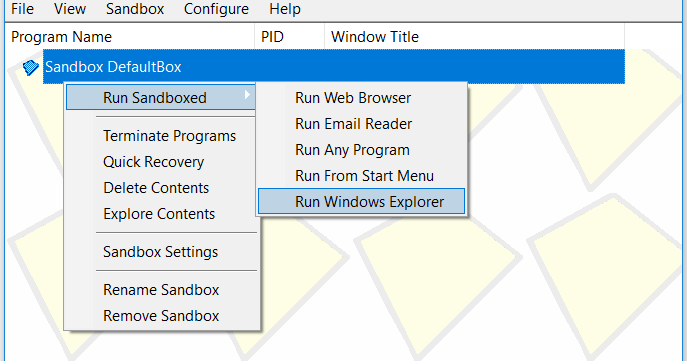

If you’ve got Windows 10 Pro or Windows 10 Enterprise, you’ve got everything you would like to run Sandbox.įor safety and security, Microsoft makes use of the container concept it’s introduced previously. If you don’t use the Sandbox, the image gets compressed to a small 25 MB., and since it’s essentially a replica of your OS, you don’t need a separate license key. This makes for an incredibly light image-just 100 MB. The process links to files that don’t change on the system and refers to common files that do change. Instead, Windows dynamically generates a clean snapshot OS supported by the Host OS on your machine. One of the higher parts of Sandbox is that you won’t get to download or create a virtual hard disc (VHD).
Windows 10 sandboxie install#
This means you’ll safely download an executable file from a risky source and install it in Sandbox without risk to your host system. Microsoft is using hardware-based virtualization through the hypervisor to run a separate kernel to isolate Sandbox from the host. The subsequent time you run Sandbox, it’s back to a fresh start. Once you close the Sandbox, any programs you installed, files you added, and settings changes you made are deleted.
Windows 10 sandboxie software#
Much like a typical VM, any software you put in within the Sandbox stays isolated and can’t affect the host machine. Previously mentioned as InPrivate Desktop, this feature creates an “isolated, temporary, desktop environment” that you can run software on without worrying about harming your machine. In a post on Microsoft’s Tech Community blog, Hari Pulapaka details the new Windows Sandbox. Not exactly something you would like to line up to check out a questionable executable file.įortunately, Microsoft has announced a replacement solution that solves all of those problems directly. You almost certainly don’t want to use these power-hungry resources on a laptop.Īnd finally, VMs are complicated. If you employ an outsized HDD, then performance is often slow. If you create use of snapshots, you’ll quickly refill a smaller SSD. Second, running a VM at decent performance levels requires reasonably powerful hardware and much space for storing. Also See: AT&T: Cloud deal with Microsoft validates virtualization


 0 kommentar(er)
0 kommentar(er)
